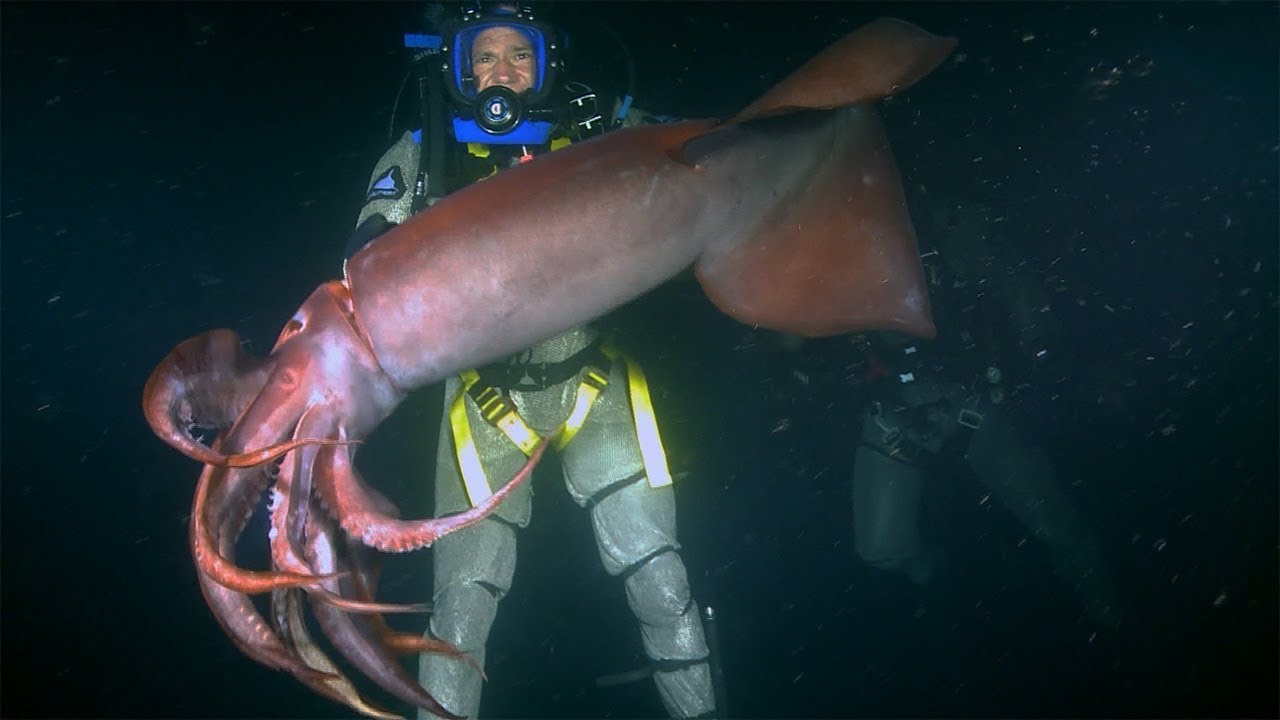The Humboldt squid (Dosidicus gigas), also known as jumbo squid or jumbo flying squid (EN), and Pota in Peru or Jibia in Chile (ES), is a large, predatory squid living in the eastern Pacific Ocean. It is the only known species of the genus Dosidicus of the subfamily Ommastrephinae, family Ommastrephidae. Humboldt squid are the largest species of flying squid with bodies, also known as mantles, as long as 1.2 metres and tentacles which add another metre. They grow rapidly and can weigh over 50 kilograms. Incredibly, this rapid growth occurs during their relatively short lifespan of one to two years. The Humboldt squid lives at depths of 200 to 700 m (660 to 2,300 ft) in the eastern Pacific (Notably in Chile and Peru), ranging from Tierra del Fuego north to California. Recently, the squid have been appearing farther north, as far as British Columbia. They have also ventured into Puget Sound. Humboldt squid are formidable predators, whose group foraging often resembles a feeding frenzy. But new research suggests that, as they hunt, these squid communicate with each other using changing patterns of light and dark pigment on their skin. The Humboldt squid's diet consists mainly of small fish, crustaceans, cephalopods, and copepods. The squid uses its barbed tentacle suckers to grab its prey and slices and tears the victim's flesh with its beak and radula. They often approach prey quickly with all 10 appendages extended forward in a cone-like shape. Their behavior while feeding often includes cannibalism and they have been seen to readily attack injured or vulnerable squid in their shoal. A quarter of squid stomachs analyzed contained remains of other squid. This behavior may account for a large proportion of their rapid growth. Upon reaching striking distance, they open their eight swimming and grasping arms, and extend two long tentacles covered in sharp hooks, grabbing their prey and pulling it back toward a parrot-like beak, which can easily cause serious lacerations to human flesh. Numerous accounts have the squid attacking fishermen and divers. Their coloring and aggressive reputation have earned them the nickname diablos rojos (red devils) from fishermen off the coast of Mexico, as they flash red and white when struggling on a line. Because of this divers wear chainmail when swimming with these squid. Several species prey on this Humboldt squid throughout the many life history stages, but adults are a favorite food of sperm whales, billfishes, and other very large predators. Humboldt squid are excellent swimmers and are covered in specialized color cells that allow them to rapidly and repeatedly change color. Humboldt squid reproduce via internal fertilization and lay large egg masses of at least one million eggs. In their short lifetime, females may lay as many as 20 million eggs, the most of any known cephalopod (squid, octopus, or relative). Here is a link to a video of a BBC reporter being attacked by one of these while they were diving cw: BBC
